George W. Bush Portrait Unveiled
The official portrait of George W. Bush, the 43rd president, was unveiled at the White House yesterday. The ceremony was a rare display of political humor and grace.
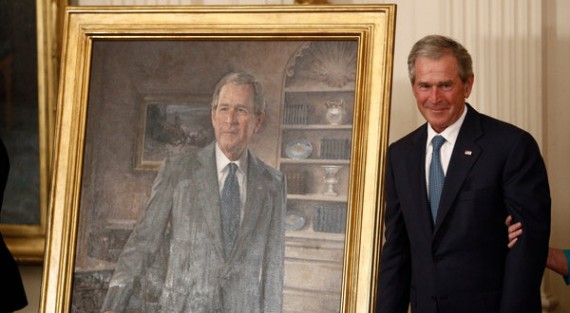
The official portrait of George W. Bush, the 43rd president, was unveiled at the White House yesterday. The ceremony was a rare display of political humor and grace.
NYT (“Political Truce for a Portrait Unveiling“):
When former President George W. Bush returned to the White House on Thursday to unveil his official portrait, he brought along his wife, Laura; his parents, George and Barbara; daughters, Jenna and Barbara; and a couple of hundred cheering and whooping former staff members.
“Behave yourselves,” a grinning Mr. Bush said to the audience, which included his longtime political guru Karl Rove and former Defense Secretary Donald H. Rumsfeld. Turning to President Obama with a look of mock chagrin, Mr. Bush said, “Thank you so much for inviting our rowdy friends to my hanging.”
That wisecrack was one of a series uncorked by the 43rd president, who was making a rare re-emergence into the glare of TV cameras. And it captured the peculiar nature of this White House ritual, in which the president and his predecessor are meant to banish partisanship in favor of civility, bonhomie and even grace.
Mr. Obama, whose re-election bid is based on stoking fears of returning to the failed policies of Mr. Bush, praised his predecessor as having “extraordinary strength and resolve” after the Sept. 11 attacks. Americans, he said, will never forget the image of him standing atop the rubble of the World Trade Center, bullhorn in hand.
“Plus,” Mr. Obama said, smiling at Mr. Bush, “you also left me a really good TV sports package. I use it.”
It was not clear whether Mr. Obama was lauding or tweaking Mr. Bush when he recalled the chaotic months after the 2008 election. “We wouldn’t know until later just how breathtaking the financial crisis had been,” he said.
Then the president invited Mr. and Mrs. Bush to the stage, where they lifted black sheets to unveil portraits by a Texas artist, John Howard Sanden. Mr. Bush is depicted in the Oval Office before one of his favorite artworks, a 1929 Western painting, “A Charge to Keep,” which he used as the title for his memoir. Mrs. Bush is depicted in a midnight-blue gown, standing in the Green Room, which she helped refurbish in 2007.
Mr. Bush thanked Mr. Obama and his wife, Michelle, for their hospitality in feeding 14 members of the Bush family. He steered clear of substantive remarks about Mr. Obama’s presidency, instead jesting about how the White House collection would now start and end with a George W. (the other being George Washington).
He reminded Mrs. Obama that when British soldiers set fire to the White House in 1814, another first lady, Dolley Madison, saved the portrait of the first George W. “Now, Michelle,” he said, gesturing to his newly unveiled painting, “if anything happens, there’s your man.” And he told Mr. Obama that as he wrestled with tough decisions, he could always “gaze at this portrait and ask, ‘What would George do?’ ”
Mr. Bush’s voice caught once, when he paid tribute to his father, “Number 41,” who he said “gave me the greatest gift possible: unconditional love.” Former President George Bush sat in the front row in a wheelchair.
It’s been almost eight years since the Clinton portrait ceremony, which was similarly gracious despite even more awkward circumstances. After all, Clinton had defeated Bush’s dad in a bitter contest in 1992 and Bush campaigned against Clinton’s moral failures in 2000. As I wrote at the time, though, shared membership in the most elite club in America transcends all that:
As noted recently, the American presidency is something of a fraternity that seems to create a bond between its few living members that often transcends politics. We’ve seen examples of this recently at the World War II Memorial dedication ceremonies and the tributes to former President Ronald Reagan last week. The latest example was the glowing reception given to former President Bill Clinton by President Bush yesterday at the unveiling of the former’s official White House portrait.
[…]
This is fundamentally right, I think. I was no big fan of many of Clinton’s policies and thought he dishonored the office with his conduct at times. Still, he devoted eight years to the most stressful job imaginable and tried to make the country better, as all presidents have. It’s useful to set partisan politics aside occasionally and acknowledge the sacrifice that people make in the public’s service.
There’s no dishonor is emphasizing the positive in the spirit of an occasion. Just as it was inappropriate to be too critical of Reagan Administration policies during the week of mourning, so, too, was it right to set aside the real differences between these men for this occasion. There will be plenty of time to emphasize those differences between now and November.
If anything, the atmosphere is even more poisonous now, so the rare break is quite welcome.

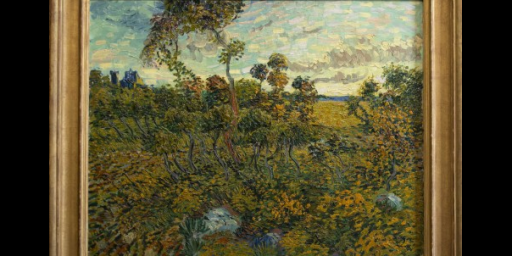
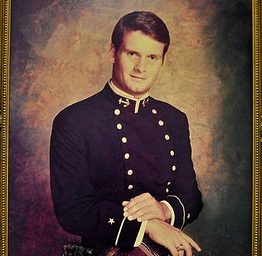
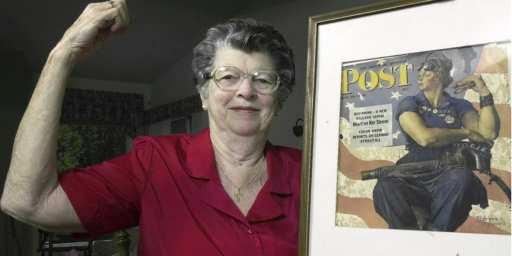
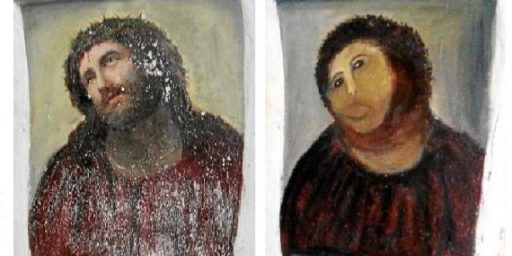

Despite any political differences, there’s almost always a bond of respect and understanding between the current president and those who have come before (after, say, the first few months in office). They share experiences that at most three or four other people in the country can understand.
Maybe W thinks Obama is a Commie and Obama thinks W is a fascist. They both know what it’s like to stand in that situation room and make the decision.
I think the portrait makes him look older, especially around the mouth.
@DRS: I wonder if all Presidents wish they could have their likeness captured at the start of their administration, rather than near the end, as is de rigueur.